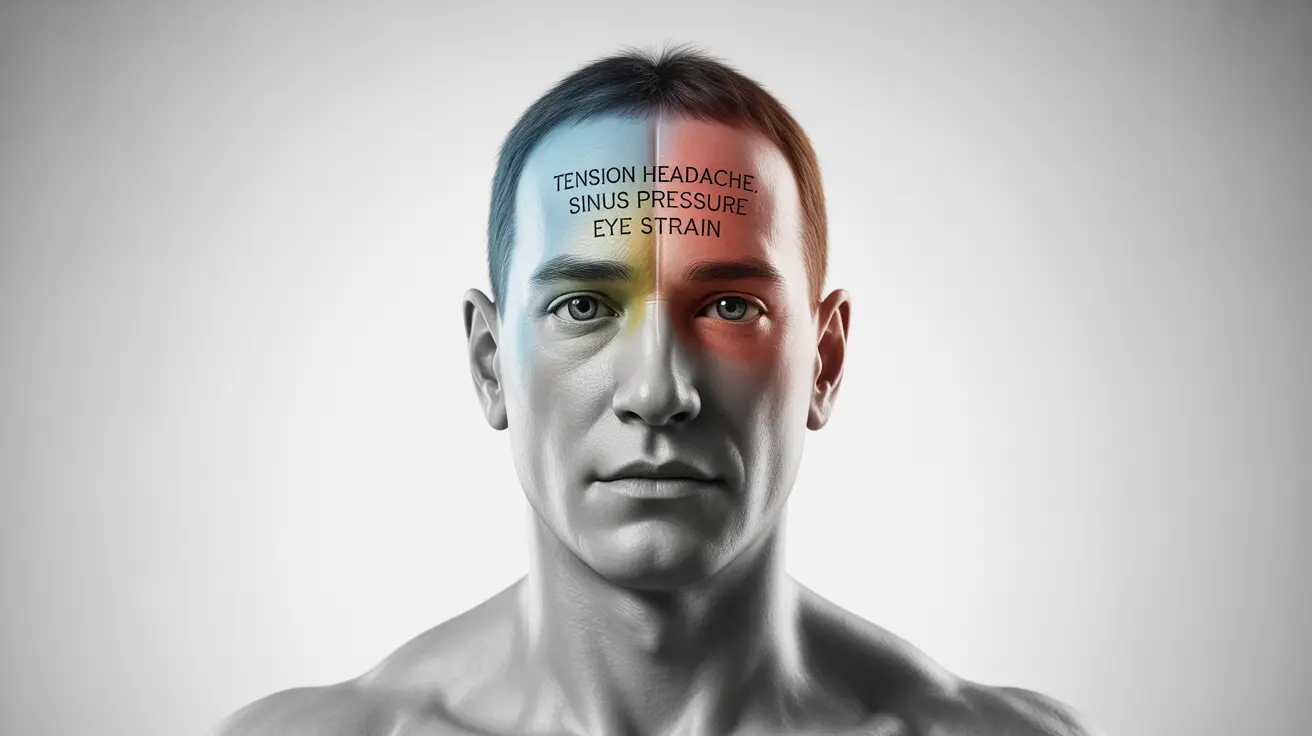Experiencing pressure in your temples can be uncomfortable and concerning. This sensation, which can range from mild discomfort to severe pain, affects many people and can stem from various underlying causes. Understanding the source of temple pressure is crucial for finding effective relief and knowing when medical attention might be necessary.
While temple pressure is often associated with common conditions like tension headaches or stress, it can also signal other health issues that require attention. Let's explore the various causes, symptoms, and treatment options available for managing this uncomfortable sensation.
Common Causes of Temple Pressure
Temple pressure typically results from several common conditions:
- Tension headaches
- Stress and anxiety
- Sinus congestion
- TMJ disorders
- Eye strain
- Dehydration
- High blood pressure
Each of these causes may present slightly different symptoms and require specific approaches for relief. Understanding the distinguishing characteristics can help you identify the root cause of your discomfort.
Distinguishing Different Types of Temple Pressure
Tension Headache Characteristics
Tension headaches typically cause:
- Dull, band-like pressure around the head
- Tenderness in the temple area
- Mild to moderate pain that worsens throughout the day
- Tight sensation in neck muscles
Migraine Indicators
Migraine-related temple pressure often includes:
- Throbbing or pulsating pain
- Sensitivity to light and sound
- Nausea or vomiting
- Visual disturbances
Sinus-Related Pressure
Sinus-related temple pressure usually features:
- Pain that worsens when bending forward
- Accompanying nasal congestion
- Facial tenderness
- Pressure that changes with weather
Treatment and Relief Options
Immediate Relief Measures
Several self-care strategies can help alleviate temple pressure:
- Gentle temple massage
- Cold or warm compresses
- Over-the-counter pain relievers
- Staying hydrated
- Practice stress-reduction techniques
- Taking regular screen breaks
Long-term Prevention Strategies
To prevent recurring temple pressure, consider these lifestyle modifications:
- Maintaining good posture
- Regular exercise
- Stress management techniques
- Adequate sleep
- Proper ergonomics at work
- Regular eye examinations
When to Seek Medical Attention
While temple pressure is often harmless, certain symptoms warrant immediate medical attention:
- Sudden, severe headache
- Pressure accompanied by confusion or speech problems
- Visual disturbances
- Fever and stiff neck
- Pressure following head injury
- Chronic pressure that doesn't respond to over-the-counter treatments
Frequently Asked Questions
What are the common causes of pressure in the temples and how can I tell which one I have?
Common causes include tension headaches, stress, sinus issues, and TMJ disorders. You can identify the cause by noting accompanying symptoms: tension headaches cause dull, band-like pressure; sinus issues include nasal congestion; TMJ problems often include jaw pain; and stress-related pressure typically worsens with anxiety.
How can I relieve pressure in my temples caused by tension headaches or stress?
Relief measures include gentle massage, cold or warm compresses, over-the-counter pain relievers, stress management techniques, and proper rest. Regular exercise and maintaining good posture can also help prevent tension headaches.
When should I see a doctor about pressure or pain in my temples?
Seek medical attention if you experience sudden severe headaches, confusion, speech problems, visual disturbances, fever with stiff neck, pressure following head injury, or if the pressure persists despite over-the-counter treatments.
How can I differentiate between a migraine and a tension headache when I feel pressure in my temples?
Migraines typically involve throbbing pain, sensitivity to light and sound, and possible nausea or visual disturbances. Tension headaches usually cause dull, band-like pressure without these additional symptoms and are typically less severe.
Can sinus infections or temporomandibular joint (TMJ) disorders cause pressure in the temples and what treatments are available?
Yes, both conditions can cause temple pressure. Sinus infections may require decongestants, antibiotics, or nasal sprays. TMJ treatments include jaw exercises, stress reduction, mouth guards, and pain relievers. A healthcare provider can recommend the most appropriate treatment based on the specific condition.




